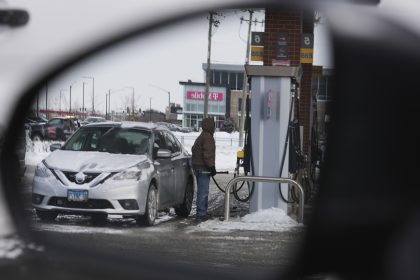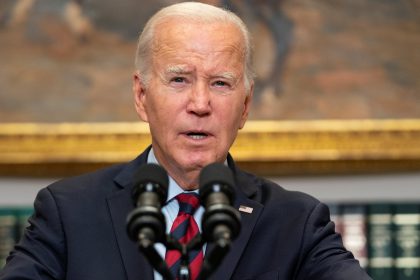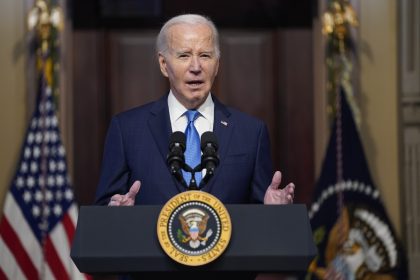US Consumer Spending in December Threatens Continued Slowing of Economy

U.S. consumer spending tumbled 0.5 percent in December, the Commerce Department reported Friday.
The slide, the biggest decline in nine years, is yet more evidence that the 2018 holiday shopping season was a disappointment for retailers and sellers of bigger ticket items, like automobiles.
The sharp decline came after sizable gains in consumer spending in October and November. In dollar terms, it reflects a decrease of $67.2 billion in spending for goods and a $18.2 billion decrease in spending for services.
Within goods, recreational goods and vehicles was the leading contributor to the decrease, the department said. There were also significant declines in the purchase of nondurable goods such as clothing.
Within services, the largest contributor to the decrease was spending for household electricity and gas.
Consumer spending is a closely watched barometer of the nation’s well-being because it accounts for about 70 percent of economic activity. Given December’s drop-off in spending, many economists expect the economy to slow further in the current quarter.
Meanwhile, incomes rose 1 percent in December but edged down 0.1 percent in January, the first decline since November 2015.
It should be noted here that while the December estimates released by the Commerce Department Friday include both income and spending measures, the January estimates were limited to personal income due to the 35-day partial shutdown of the government that ended on Jan. 25.
The January report on consumer spending held back due to the shutdown-related delay in the release of the Census Bureau’s Advance Monthly Retail Sales report.
The Commerce Department attributed January’s drop in personal income to decreases in dividend, farm proprietors’ and interest income.
Wages increased 0.3 percent in January after rising 0.5 percent in December.
The good news in Friday’s report was that inflation remained relatively benign in December.
According to the Federal Reserve, inflation rose just 1.7 percent for the 12 months ending in December — the slowest 12-month pace since a similar 12-month gain for the period ending in October 2017.
More importantly, it remained below the Fed’s 2 percent target for annual price increases.
Speaking before the Citizens Budget Council in New York City on Thursday, Federal Reserve Chairman Jerome Powell said he believes the economy is currently in good shape with low inflation and maximum employment.
But he also warned that lawmakers must do more to address issues that are holding back long-term growth, such as an increase in weak productivity.
He also expressed concern about the slowdown in growth in the labor force, a reflection in part, he said, of the growing number of baby boomers who are now retiring and lower birth rates.
More troubling Powell said is that many people aged 25 to 54 are simply dropping out of the workforce, a decline being seen particularly among the less educated.
Here too he encouraged lawmakers to do more to prepare that population to participate in a modern workforce.
“We need policies that support innovation and create a favorable environment for investment in both the skills of workers and the tools they have,” Powell said.
On Wednesday Powell told the House Financial Services Committee that the Fed intends to take a “patient approach” in deciding when to boost interest rates again.
His prepared testimony, the Fed’s semiannual monetary report to Congress, was identical to remarks he made before the Senate Banking Committee a day earlier.
He told both committees the Fed is also closely monitoring emerging risks, including economic slowdowns in China and the European Union.
Powell’s comments and Friday’s Commerce Department report come amid growing worries that the 19-country eurozone is heading toward a recession.
In a report released Friday, IHS Markit, a financial information company, reported that Europe’s manufacturing sector is contracting for the first time since June 2013.
IHS Markit’s “purchasing managers’ index” is closely watched by the European Central Bank. It fell to 49.2 points in February, down from 50.5 points the previous month. A drop below 50 points indicates a contraction in activity.
“Euro area manufacturing is in its deepest downturn for almost six years, with forward-looking indicators suggesting risks are tilted further to the downside as we move into spring,” said Chris Williamson IHS Markit’s chief business economist, in a statement accompanying the report.
“Most worrying is the downward trend in new orders,” Williamson said. “Orders are falling at a faster rate than output to a degree not seen for seven years, meaning production is likely to be pared back further in coming months unless demand revives.
“In addition to widespread trade war worries, often linked to U.S. tariffs, and concerns regarding the outlook for the global economy, companies report that heightened political uncertainty, including Brexit, is hitting demand,” he said.






















